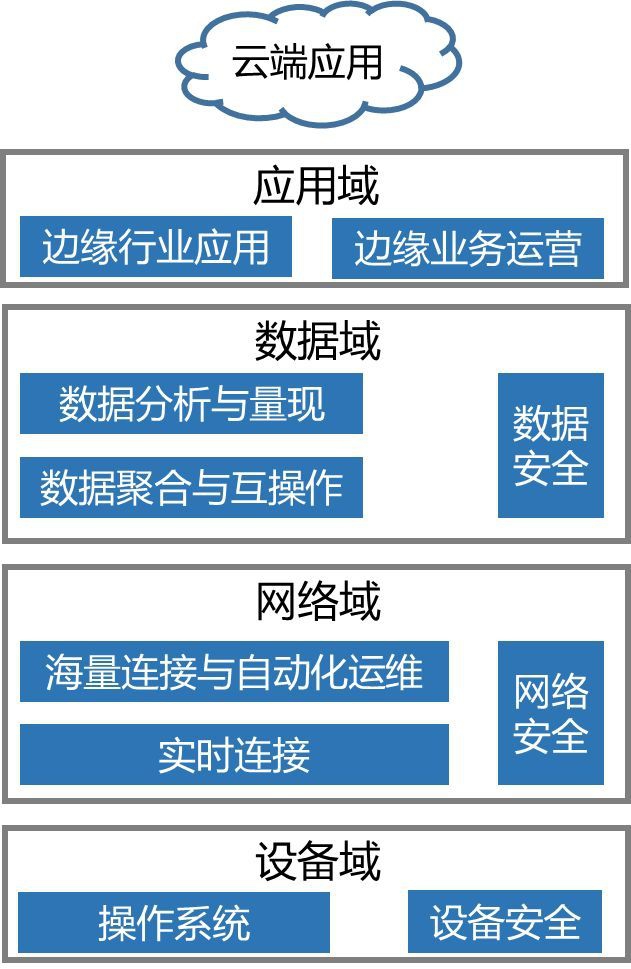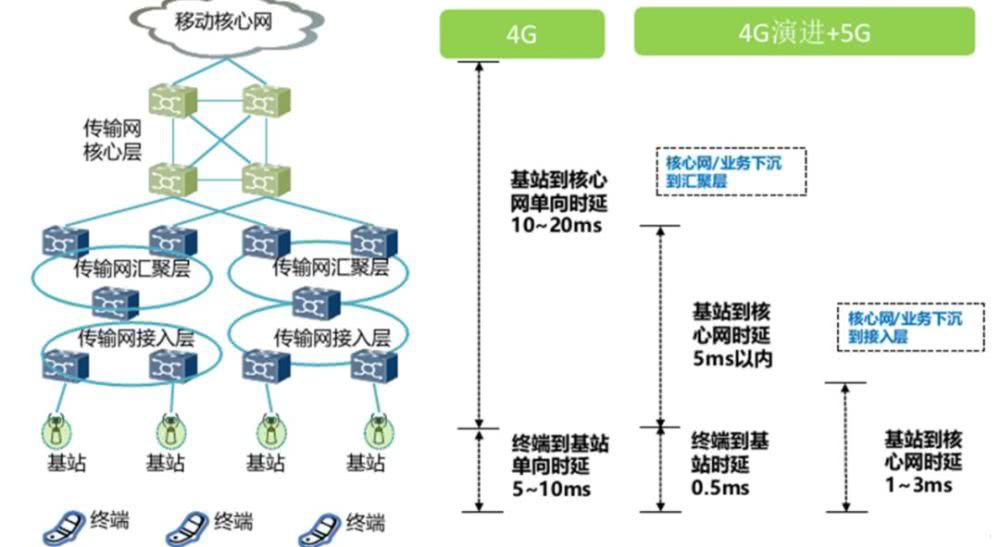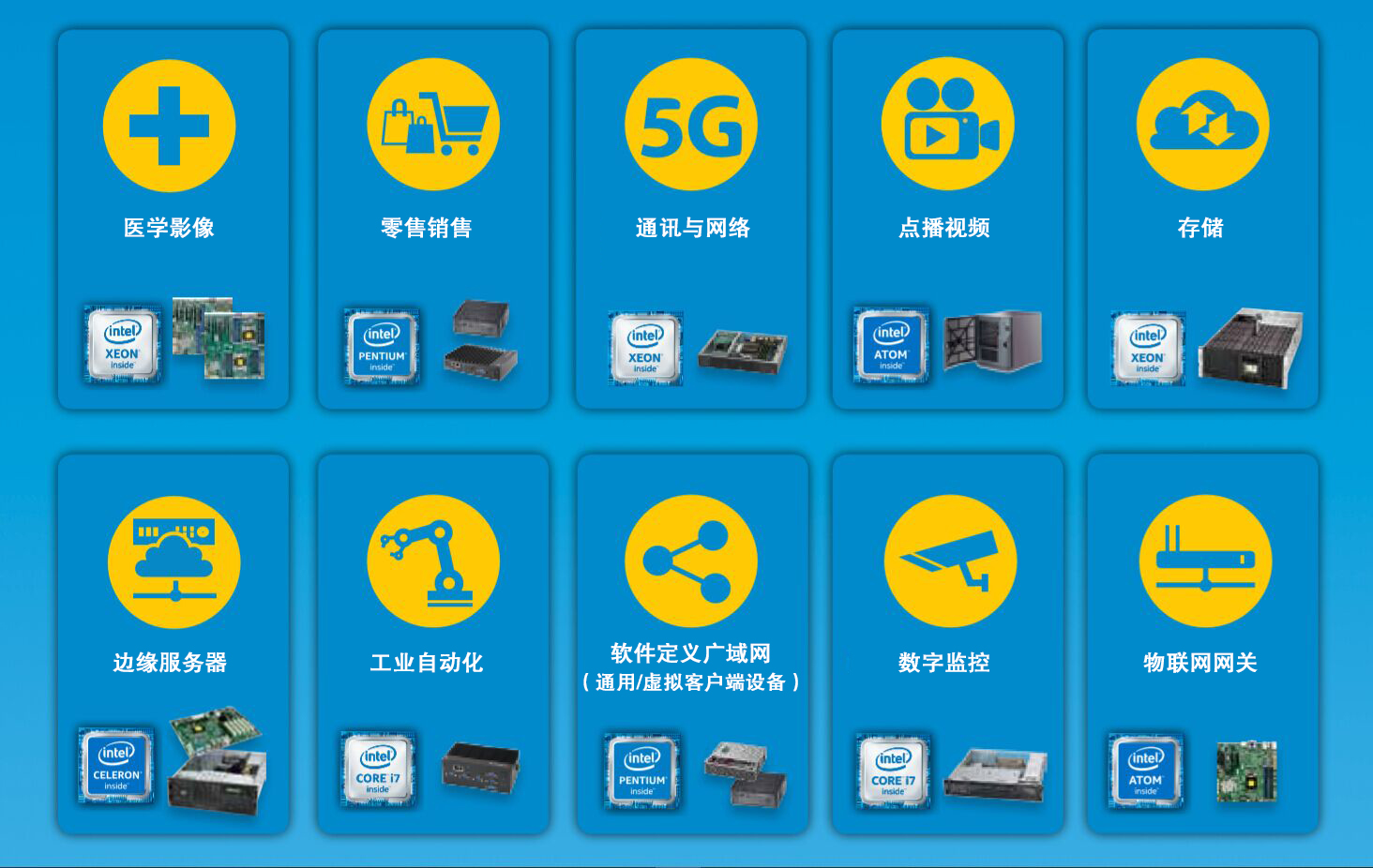What is edge computing?
We can use the octopus's life habits to understand what is edge computing (MEC).
Octopus has the highest IQ among invertebrates. They are very dexterous and fast when hunting. They have a high degree of coordination between arms and feet, and never twist or tie knots. This is because 60% of the octopus's huge number of neurons are distributed on the octopus's eight legs, and only 40% of its brain. It is a structure of "multiple cerebella+one brain", similar to distributed computing.
Edge computing is also a kind of distributed computing, which transfers the processing of data, the running of application programs and even the realization of some functional services from the network center to the nodes on the edge of the network.
Edge computing Alliance ECC defines four areas for edge computing:

Where is edge computing good?
01.low cost
Edge computing supports local data processing, and local unloading of large traffic services can reduce the pressure on return and effectively reduce costs.
02.Low delay
In the 5G era, business processing functions rely on edge computing to sink to the base station, and the data transmission delay can reach 0.5ms; It can sink to the transmission convergence layer within 5.5ms.

03.Large broadband
The edge computing platform provides enterprises with "private cloud" hosting services, makes full use of the cloud characteristics of operators' networks, further meets the demand for large bandwidth, and can provide enterprises with high-quality network resources and large bandwidth services by accessing operators' high-quality networks.
Where is edge computing?
With the continuous mature development of 5G, the application field of edge computing is also being integrated into people's daily life and work with blowout development, such as AR/VR virtual enhancement, smart factory, smart city, driverless, medical telepresence (telemedicine), disaster relief, live broadcast, etc.

Because of the characteristics of edge computing applications, edge devices generally require small size, easy installation and placement, and can adapt to special environments or be installed in other large devices, so embedded devices become the first choice of edge computing.
Beiliande's new generation of embedded edge computing device supports Intel® Xeon® Processor D-2100 (formerly known as Skylake-D) series system on chip (SoC) processor. Intel ®; QuickAssist Technology (QAT) includes up to four 10 gigabit Intel ®; The integrated port of Ethernet and up to 512 GB addressable memory with error correction code (ECC) can provide up to 100Gbps hardware acceleration for compute intensive applications.

E300-9D系列
The E300-9D series of Beiliande only has a height of 1U (43mm), a width of 254mm, a depth of 226mm, and a weight of only 3.4kg. It provides rich network interfaces, with 4 gigabit ports, 2 gigabit ports, and 2 optical fiber ports, which can be used as vehicle mounted systems (unmanned driving), face recognition systems (gate channels, unmanned retail, ticketing systems, etc.)


5019D-FN8TP series
Beiliande 5019D-FN8TP series also has a height of only 1U (43mm), a width of 437mm, a depth of 249mm, and a weight of only 3.63kg. It provides a wealth of network interfaces, with four gigabit ports, two gigabit ports, and two optical fiber ports. It can be used for crop networking (IoT), edge computing, software defined wide area network (SD-WAN), and virtual network functions (NFV), that is, communication infrastructure. For example, IoT gateway, switch, firewall, routing,

SD-WAN
Beiliande E100-9S (E/L) series adopts Intel® 7th generation core ™ I7/i5/i3 ultra-low power u - series processor, 2 cores/4 threads, to achieve the balance of power and performance. Outstanding features include up to 32GB of fast DDR4 DRAM 2 dimming, USB 3.0/USB 3.1, M.2, Mini PCI-E, and SATA 3.0 (6Gbps) hard drives. It supports the next generation graphics controller, 4K high-definition graphics resolution and LVDS, HDMI and DP port 3 displays. Suitable for small size, energy saving, reliable, manageable, fanless and long-life applications.

E100-9S (E/L) series
Beiliande E100-9S (E/L) series is 44mm high, 195mm wide, 151mm deep, and weighs only 1.2kg. It is fan free. It has rich I/O input ports, dual display interfaces, four COM ports, two USB 3.0 interfaces, one USB 3.1 interface (Type C), four USB 2.0 interfaces, audio microphone (optional), and WIFI (optional). The rich external interfaces allow it to meet many application scenarios. Such as gateways, factories, buildings, residences, digital information kiosks, interactive information systems, environmental monitoring, etc

Beiliande 5028D Series Seventh/Sixth Generation Intel® Core ™ The processor provides significant improvements in graphics performance, amazing visual effects for games, and compelling 4K content creation and media playback through AVX 2.0. Provides enhanced security through AES instruction faster encryption and BIOS/FW protection, new I/O connections, and multiple independent display capabilities.

5028D(5029D)series
Beiliande 5028D series is 240 mm high, 210 mm wide, 279 mm deep, and 6.8 kg in weight. It is a mini box design that supports SR-IOV technology and can be used for network security equipment, cloud and virtualization, high-performance NAS servers, small and medium-sized enterprise offices, ATM machines, and video on demand.

As intelligent devices become commonplace, the Internet of Things has begun to be deeply rooted in our daily life, and it will soon be difficult to imagine life before that. IoT gateways and industrial PCs are being deployed on a large scale to bring computing power closer to data. In addition to the amazing scale of growth, managing these devices presents customers with numerous challenges. The equipment is distributed throughout the site, usually in locations that are difficult to fix and reach. The scale and complexity of the edge ecosystem means that many traditional equipment deployment and maintenance processes are not enough. On the contrary, customers need a solution to solve the complexity, such as managing widely distributed devices under unreliable connections and high latency, protecting secure devices in a borderless world, and processing data at remote locations. With the help of Beiliande, customers can simplify the management of edge hardware in the entire environment. Our powerful and rugged equipment enables customers to move processing power away from the data center and close to the edge.

To learn more about edge computing devices, or more server devices, please visit the official website of Beiliande. We look forward to your visit.